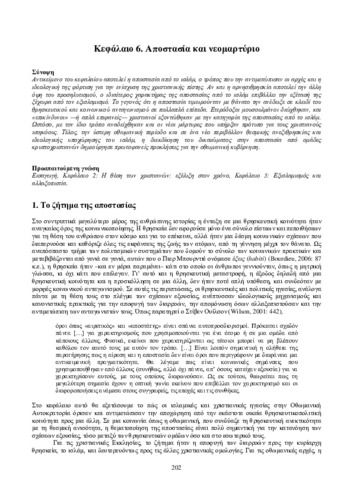| Title Details: | |
|
Apostasy and neomartyrdom |
|
| Authors: |
Gkara, Eleni Tzedopoulos, Giorgos |
| Reviewer: |
Stamatopoulos, Dimitrios |
| Subject: | HUMANITIES AND ARTS > HISTORY > GENERAL HISTORY, THEORY > OTTOMAN HISTORY HUMANITIES AND ARTS > HISTORY > SPECIALIZED HISTORIES HUMANITIES AND ARTS > HISTORY > GENERAL HISTORY, THEORY > MODERN HISTORY |
| Keywords: |
Christians
Muslims Ottoman Empire Church Islamisation Syncretism Intercommunal Relations Confessionalization Conversion |
| Description: | |
| Abstract: |
The chapter concerns apostasy from Islam, the ways in which the authorities dealt with it and its ideological load for the strengthening of the Christian faith. While apostasy is the other side of conversion, the particular nature of apostasy from Islam necessitates its examination separately from Islamization. The fact that apostasy was punishable by death turned it into a key to religious and social antagonism at multiple levels. Heterodox Muslims were persecuted and “dangerous” –or simply prominent– Christians eliminated on charges of apostasy from Islam. But, in the same way, new martyrs were created, who became a model for the Christian subjects. Finally, in the late Ottoman period and in a new environment of institutionalized freedom of religion and ideological retreat of Islam, the claim of the right to apostasy on the part of Crypto-Christian groups created unprecedented challenges for the Ottoman government.
|
| Table of Contents: |
1. The challenge of apostasy
2. Christian and Muslim approaches to apostasy 2.1. Orthodox Christianity 2.2. Hanefi Islam 2.2.1. “Invitation to repentance” 2.2.2. “Heresy”, “disbelief” and insult of religion 3. Apostasy and “Ottoman confessionalization” 3.1. The challenge of heterodoxy 3.1.1. The Kızılbaş 3.1.2. “Heretics” 3.2. Contentious Islamization 3.2.1. Pronouncing the shahada 3.2.2. Attributes of Muslimness 3.2.3. False accusations 3.3. The importance of conjuncture 4. Apostasy in the “age of the Kadızadeli” 4.1. The risks of mixed company 4.2. Separation of the religious communities 5. Neomartyrs 5.1. The intentional pursuit of martyrdom by “negators of Christ” 5.1.1. The beginning: Markos Kyriakopoulos 5.1.2. Background 5.1.2. The maturation of a phenomenon: Nannos 5.2. The development of a theory of martyrdom 5.3. The attitude of the official Church 5.4. The new saints 5.5. Enlighteners and contra-Enlighteners 6. Apostasy after the Tanzimat 6.1. Limits of religious conversion 6.2. The issue of crypto-Christians 6.3. From religious to national identities |
| Linguistic Editors: |
Lampada, Despoina |
| Type: |
Chapter |
| Creation Date: | 2015 |
| Item Details: | |
| License: |
http://creativecommons.org/licenses/by-nc-nd/3.0/gr |
| Spatial Coverage: |
Ottoman Empire |
| Temporal Coverage: |
14th-20th cc. |
| Handle | http://hdl.handle.net/11419/2887 |
| Bibliographic Reference: | Gkara, E., & Tzedopoulos, G. (2015). Apostasy and neomartyrdom [Chapter]. In Gkara, E., & Tzedopoulos, G. 2015. Χριστιανοί και μουσουλμάνοι στην οθωμανική αυτοκρατορία [Undergraduate textbook]. Kallipos, Open Academic Editions. https://hdl.handle.net/11419/2887 |
| Language: |
Greek |
| Is Part of: |
Χριστιανοί και μουσουλμάνοι στην οθωμανική αυτοκρατορία |
| Publication Origin: |
Kallipos, Open Academic Editions |


